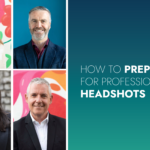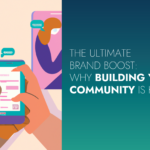Google the term ‘how to measure content marketing’s ROI’ and 14,700,000 results are returned in 0.52 seconds. Ask most marketers how they prove their content marketing’s Return on Investment (ROI) and it will take them the same time to find the nearest exit!
A recent CMO survey found that 65% of marketers can’t quantitatively measure the impact of their marketing on the bottom line. And while 43.8% of them have a good qualitative sense of the impact, they don’t have a specific, single number that will prove to their Boards that it has all been worthwhile.
It’s not for lack of skill, resources or trying—it’s because it’s complicated. And it’s complicated because it’s not linear.
The Marketing Mixer
Think about the last time you made a significant purchase. Mine was a new Stand Mixer because I recently rediscovered my love of baking. In simpler, more analogue times, I’d probably have received a piece of direct mail through the letterbox with a special offer, which I would have redeemed if I was in the market for a Mixer.
Said Mixer’s Marketing Manager would have calculated how much it cost to produce the DM, subtracted that from the total sales from those redemptions and multiplied it by 100, to calculate the return on their investment. Simple—and everyone was happy.
My path to purchase was slightly more zig-zaggy. It started with some late-night scrolling and watching various influencers using the product and showing off their baked goods. That led me to the company’s website where I checked out the specs. I then googled reviews which took me on a journey through Amazon, which.co.uk, countless articles (Best stand mixers 2021), native content and blog posts.
I researched, compared and validated. And because my cookies were enabled, that mixer followed me around the internet for two weeks, until finally a display ad with a special offer came up from one of their stockists. I clicked on it, bought it and now it’s standing on my kitchen counter.
The point is, it took countless touchpoints before that mixer landed in my basket. A study conducted by Google showed that no two customer journeys are the same—even when people are buying exactly the same product. As many as 20 touchpoints for chocolate, and 500+ for flights, are needed before consumers make a decision. Many of these touchpoints involve content, so how could you possibly measure the ROI on all of that activity?
That’s before even considering the other confounding factors in measuring the ROI of your content marketing investment, i.e.:
- What period you measure for, considering that it can take between 6-9 months to start seeing the results of your content marketing (Neil Patel)
- Extraneous variables
- Multiple touchpoints (as per my Mixer example) and,
- Multiple influences (e.g. friends and family’s opinions)
It’s simpler for businesses that don’t produce a lot of content; who are only measuring a single campaign or an element of a campaign (e.g. paid media); and/or who have a more linear customer journey. For marketers implementing a full content marketing strategy with multiple touchpoints, trying to get a complete and accurate picture of your ROI may be unrealistic.
Control the Controllables
With too many variables muddying the water, denying you the perfect view, it becomes imperative to concentrate your efforts on the parts you can see working, and measure along the way; the real, verifiable proof of how your marketing is working for you.
As a content marketer, what you fundamentally want to know is that your content is having a positive impact on your business, which will translate to increased revenue over time. You want to know that each piece of content moves things in the right direction. So concentrate on proving that.
It’s the old mantra of “control the controllables,” a favourite of coaches and performance experts the world over. By focusing on the success of individual campaigns, and tracking the metrics that matter, you’ll get the best possible picture of your customers’ journey, and what you can do to convert them.
This starts with setting content objectives and KPIs and using the right metrics to measure your progress and then taking necessary actions to move the needle. Once you’re tracking those metrics you’ll get a good overall handle on whether your content marketing is having a positive impact on the business.
Keys to success here are:
- Setting clear content marketing goals that align with what the business is trying to achieve overall
- Choosing the right metrics to track
- Setting benchmarks against which to measure progress
- Including CTA’s on every piece of content you produce – whether it’s a link to another article/your sales page or a subscribe button – will help you measure conversions
- Build a picture of the user journey, so that you have a better understanding of what it takes to convert people
- Track and measure conversions.

Target Practice
According to numerous content marketing studies, the :, the top 3 objectives of content marketing in Ireland are:
Customer Engagement
Raise awareness of your products/services
Drive traffic to your website/support SEO
If these are your objectives too, then pick a maximum of 7-10 metrics from the table below to focus on. This will put everyone on the same page, and everyone will be clear about what needs to be achieved.
| Content Objectives | Metrics Options |
| Increase Customer Engagement | Pages per visit Average session duration – time spent on site Social sharing Social media likes & comments Conversion rates, i.e. the number of people that do what you want them to do, e.g. download an eBook, signing up for your email newsletter Bounce rate Net Promoter score Reviews and comments The number of people attending live/events online App or device usage (e.g. Fitbit might measure how often people check their device) |
| Raise Brand Awareness | Your SERP (Search Engine Results Page) ranking Growth in direct traffic Branded search volume Brand/product/service mentions Social media engagement: likes, comments, shares, retweets, video views etc. Social media reachVideo metrics: how much of your video is viewed, how often it is shared, comments and click-throughs. Referral traffic Track earned media value Track share of voice Compare your earned media value with competitors Track your backlink success Track customer reviews NPS |
| Drive Website Traffic/Support SEO | Increase in traffic over time Clicks from social platforms Ratio of Returning visitors to total visitors Traffic acquisition – where have people come from: social, organic search, direct clicks. Time on site Landing pages Exit pages How well your content ranks for keywords Domain authority Referral traffic Tracking the number of inbound links |
Note that the items in bold are the most important metrics for measuring the efficacy of your content overall, and would cover most objectives.
And once you’ve gathered all of this data you’ll be able to start connecting the dots between your content marketing strategy and the bottom line.
One Step Beyond
An incredibly useful tool to be used in all of this is an attribution model. This will allow you to figure out how many touchpoints it took to convert a potential customer into a sale. Then you can assign a value to each touchpoint along the sales journey, which will allow you to get a clearer picture of your ROI.
There’s an excellent article by Pawan Deshpande that explains the various attribution models brilliantly. Setting up an attribution model is resource and time-intensive, though—and still can’t magic up a solution to many of the outside factors at play.
The Bottom Line
In conclusion, getting a complete and accurate read of ROI on a full content marketing strategy with multiple touchpoints is challenging—if not entirely unrealistic. It’s like only measuring the tip of an iceberg to estimate how big the whole thing is.
But by dialling in on the factors you know you can control and measure, you can see what works and what doesn’t, build a picture of your customer journey, and tailor your marketing plans to maximum effect. And then do more of it.
And before you know it, your bottom line will look so healthy that your Board won’t care how you got there.
Need help getting there? Then get in touch; email paula@zahramediagroup.com or connect through our Contact page.
















